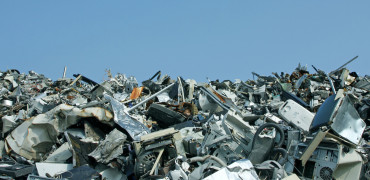Every single product or service that we use as both commercial and domestic consumers will contribute carbon emissions at some point in their lifecycle.
This process starts at the 'Cradle' - which means the point of raw material extraction from the Earth, and continues right through to the ‘Grave’, which is the final replacement of a product and (more and more) the recycling of the materials within that product.
At the start, right from extraction, raw materials produce carbon, from the extraction process and then these materials need to be transported (increased carbon costs), refined and utilised in a manufacturing process (carbon from energy use), before being combined into finished goods – otherwise known as the 'Gate', or factory gate.
These finished products are then transported (more carbon), to a holding place (a retail outlet or warehouse) before being sold on to the final customer and further transported to their place of use (more carbon costs).
Perhaps the ‘Grave’ should be renamed the ‘Reincarnation’ phase?
More carbon and don’t forget maintenance
More carbon is likely to be produced when the product is installed in both residential and commercial settings, there will then also be a carbon cost associated with its use throughout its operational lifetime – otherwise known as the Operational Carbon.
An important consideration at this phase, but one that is often overlooked, or does not have proper attention paid to it, is the maintenance regime. Ask yourself if you really service your gas boiler quite as often as you should?
The reason this is important is that a properly maintained machine will produce far less carbon emissions throughout its operational life than something left to ‘just get on with it’ until it gives up the ghost!
Reincarnation
Finally, when a product does come to the end of its useful life, it will be discarded – ideally to then be recycled so that the materials it used can be re-used elsewhere.
This product end of life stage is known as the 'Grave', although as proper reclamation and recycling of material is happening more and more, perhaps this should be renamed the ‘reincarnation’ phase?
As briefly identified above, at each step along this process, there are associated carbon costs, like the energy used in extraction, or the fossil fuels burned to transport the raw materials - or the energy used to operate the finished product itself - on its journey to a final end destination and customer.
Looking at every step
At Mitsubishi Electric, we have already looked hard at making our manufacturing as lean and green as possible so that we can remove carbon from production.
We have started the changes in packaging and product material to increase recyclability and we are always exploring ways of cutting carbon from the logistics and transport process to minimise carbon here.
We have long pioneered the highest standards of installation and commissioning with our partners to ensure that systems are set up to succeed from day one of operation and that customers benefit from advanced HVAC that minimises both energy use and carbon emissions
And we are also increasing the amount of products that automatically include remote monitoring so that maintenance regimes can be automated and energy monitoring closely watched throughout a products useful life.
For all of us, looking at the whole life cycle of a product will help us to understand an individual products contribution to emissions on their journey from Cradle-to-Gate, or Cradle-to-Grave which, in turn - will enable us to better improve the Sustainability of the solutions we offer our customers.
Jack Bain is a member of the Sustainability team



